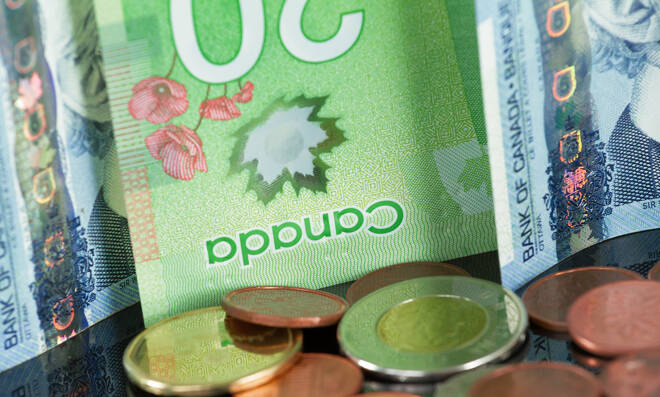Advertisement
Advertisement
USD/CAD: Loonie Hits Over One-Month Low on Subdued Oil Prices, Election Uncertainties
By:
The Canadian dollar hit over a one-month low against its U.S. counterpart, sliding for the third straight day on Monday as falling energy prices and snap election uncertainties weighed on the commodity currency.
The Canadian dollar hit over a one-month low against its U.S. counterpart, sliding for the third straight day on Monday as falling energy prices and snap election uncertainties weighed on the commodity currency.
The USD/CAD pair rose to 1.2895 today, up from Friday’s close of 1.2766. The Canadian dollar lost over 1.2% last month and further depreciated over 1.5% so far this month.
Today’s federal reserve decision and the election in Canada will be closely watched by investors. There is no sign of a majority in the Canadian election on Monday, a second time in a row, leaving either Justin Trudeau or Erin O’Toole trying to govern with a minority.
Investors are concerned that elections will lead to a deadlock that hinders government action against COVID-19 and impedes the recovery of the economy.
“What we think will matter the most from a market perspective is whether there will eventually be a workable majority. Up until some majority emerges, the Canadian dollar may continue to discount political uncertainty,” noted Francesco Pesole, FX Strategist at ING.
“At the same time, barring the worst-case scenario of a hung parliament and new elections, we still expect a gradual dissipation of political risk in the coming weeks to help CAD close its mis-valuation gap (USD/CAD is 2% overvalued, according to our short-term fair value model) as the loonie may start to benefit more freely from its good fundamentals – and above all, the prospect of more BoC policy normalisation. We still expect USD/CAD to trade below 1.25 in 4Q21.”
Canada is the world’s fourth-largest exporter of oil, which edge lower as production in the Gulf of Mexico slowly returns. U.S. West Texas Intermediate (WTI) crude futures were trading 1.38% lower at $70.99 a barrel. Lower oil prices lead to lower U.S. dollar earnings for Canadian exporters, resulting in a decreased value of the loonie.
“We don’t think the federal election is weighing on the CAD in any significant way. In fact, while the CAD has fallen against the USD this week, it has lost less ground than most of its G10 currency peers. Short-term CAD vols have firmed but remain within this year’s range (1w vol peaked at 9% in February),” noted Shaun Osborne, Chief FX Strategist at Scotiabank.
“The election race remains tight, and another minority government remains the most likely outcome. Research by our Scotia Economics colleagues suggests that there is ultimately very little difference in the fiscal outcomes through 2025 between either the Liberal or Conservative parties’ platforms. Either way, a minority will limit the next government’s room for significant manoeuvre.”
The dollar index, which measures the value of the dollar against six foreign currencies, was trading 0.01% higher at 93.204. The dollar reaches a one-month high, boosted by recent strong economic data and speculation regarding Fed tapering. Fed policymakers will meet this week and open discussions about reducing their monthly bond purchases are expected.
It is highly likely that the world’s dominant reserve currency, the USD, will rise by end of the year, largely due to the expectation of two rate hikes by the Fed in 2023. With the dollar strengthening and a possibility that the Federal Reserve will raise interest rates earlier than expected, the USD/CAD pair may experience a rise.
About the Author
Vivek Kumarauthor
Vivek has over five years of experience in working for the financial market as a strategist and economist.
Advertisement
